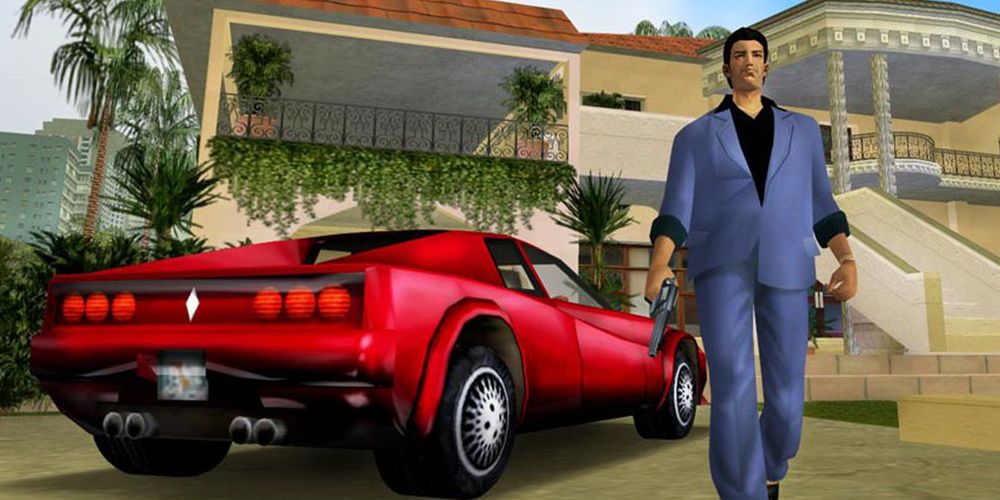At the start of Grand Theft Auto: Vice City, the story is centered around Tommy Vercetti's trip to the titular metropolis for a drug deal. This initial deal goes awry, morphing the game into the story of Tommy setting up his own, massive criminal empire and establishing an official crime family. This rags-to-riches tale is told both through GTA: Vice City's narrative and its gameplay, as it introduced the concept of assets to the series - something that's stuck with GTA ever since.
The first property players purchase in GTA: Vice City is the Vercetti Estate, and it's far from the last. Over time, Tommy constructs his empire by buying assets like clubs, an ice cream factory, and more. These are all incorporated into gameplay by way of specific missions required for each asset before it starts generating a consistent profit.
Rockstar has continued to use this concept of asset acquisition in almost every Grand Theft Auto game after. GTA 4 is the only mainline title to do away with it; protagonist Niko Bellic was simply given safehouses free of charge at set intervals throughout the story. Every other game has used a similar system to Vice City. San Andreas didn't charge players for as many of its properties, leading to a quicker road to profitability, but GTA 5 brought back upfront costs for almost every property.
How Vice City's Asset Management Shaped Grand Theft Auto
Regardless of how players get ahold of their assets, the core idea is the same: Purchasing and upgrading properties provides a feeling that players are building up a criminal empire from almost nothing. By forcing players to do missions to fully open up each business, Rockstar makes them feel like they're invested in those businesses, too.
GTA 5 takes property acquisition to new levels with several of its assets. Instead of generating a set amount of passive income after finishing a questline, properties like the Car Scrapyard, LSPD Auto Impound, and Sonar Collections Dock only payout if the player is actively engaging with them. If they want to get the most out of the Auto Impound, for example, they'll need to tow 300 cars. It's likely not worth it for most players to do that much work, but Rockstar provides the option for those who want to become fully immersed in GTA 5.
This system could be further evolved in the next Grand Theft Auto game, which would be especially fitting if GTA 6 returns to Vice City. Rockstar has consistently played with the property buying formula since introducing it in Grand Theft Auto: Vice City, so it should be interesting to see what the developer comes up with next.


